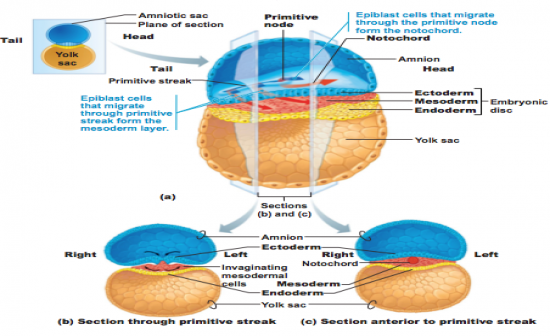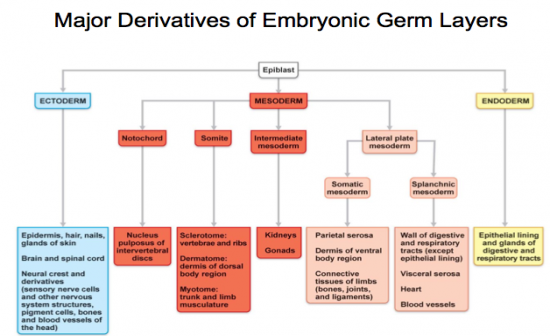Cards In This Set
| Front | Back |
|
Cell Potency
|
potency specifies the potential to differentiate into different cell types
|
|
Totipotency
|
Zygote (1 day old), morula (3 days old): cells can differentiate and produce all the cells in an organism, including extraembryonic tissues
|
|
Pluripotency
|
Inner cell mass of blastocysts (5-7 days old): cells can differentiate into any of three cell masses (endoderm, mesoderm, or ectoderm); originate as inner mass cells within the blastocyst and go on to develop the spectrum of body cells and tissues
|
|
Multipotency
|
Cells from a single germ layer (ex: mesoderm) in 3 week old embryo; cells whcih can differentiate into 2 or more cell types
|
|
Unipotency
|
Terminally differentiated to form only on cell type (ex: neuron)
|
|
Stem Cells in tissues
|
Many tissues in both children and adults contain populations of stem cells that renew themselves continually and divide to produce new tissue cells as needed
|
|
Embryology
|
Study of origin and devleopment of a single individual
Prenatal period -embryonic period: first 8 weeks -fetal period: 9 weeks |
|
Embryonic period
|
Fertilization ->1 week conceptus-> 3 week embryo (3mm) -> 5 week embryo(10mm)->8week embryo (22mm)
duration: 1st 8 weeks postfertilization major events: organs form from 3 primary germ layers; basic body plan emerges |
|
Embryonic disc with ectoderm, mesoderm, and endoderm
|
 |
|
Week 3: Three layered embryo with three types of germ cells
|
Ectoderm, nervous tissue
mesoderm, muscle and connective tissue endoderm |
|
Ectoderm germ layer
|
Brain, spinal cord, skin epidermis
|
|
Mesoderm germ layer
|
Bones, muscle, connective tissue including dermis, epithelium inside blood vessels (endothelium), epithelium linging ventral body cavities (mesothelium)
|
|
Endodermaal germ layer
|
Forms inner epithelial lining of the gut tube and its derivative respiratory tubes, digestive organs, and urinary bladder) nd secretory cells of some glands
|
|
Major Derivatives of Embryonic Germ Layers
|
 |
|
4 basic tissue types & basic functions
|
-Epithelial tissue: covering
-Connective tissue: support -Mucle tissue: movement -Nervous tissue: control |



